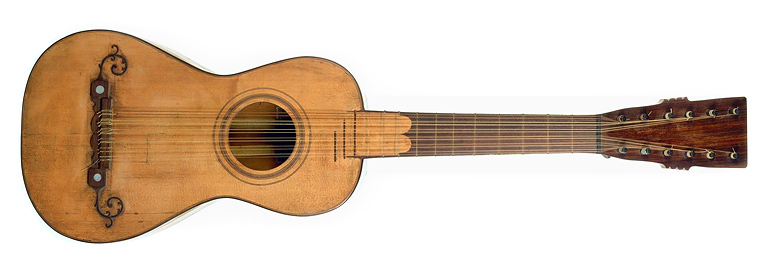|
|
||||||||||||||||||
.
|
We've been playing chords regularly since the beginning of this course so you know what a chord is. However, in guitar solos, instead of using chord symbols, composers write chords in notes for precision of musical voicing and texture. Chords are Vertically AlignedWhat does a written chord look like? You can easily recognize a chord because the notes are vertically aligned on the staff. Similarly, tablature chords use vertically aligned numbers. |
 |
Andantino in C Major | Matteo Carcassi | Performed by Peter Kun Frary
 Study Tips
Study Tips
Chords and Right-Hand Technique
Matteo Carcassi's Andantino in C Major begins with two-note chords on non-adjacent strings—second and fourth strings. These types of chords are played by pinching between the thumb and a finger: p- i, p-m, p-a, etc. In the example below, play the first chord by pinching the second and fourth strings between the thumb and middle finger.
Carcassi's Andantino | First line
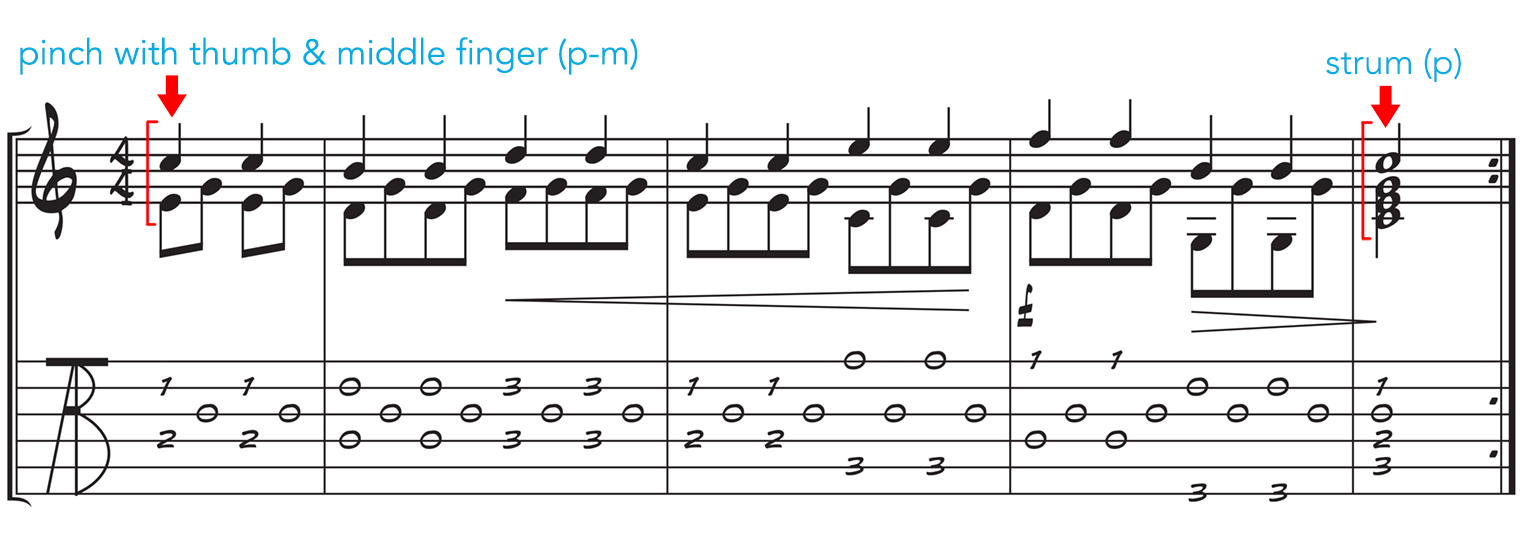
Chord Pinch | Chords on non-adjacent strings, e.g., first and sixth strings, are pinched between thumb and finger(s): p- i, p-m, p-a, p-i-m, p-i-a, p-i-m-a, etc.
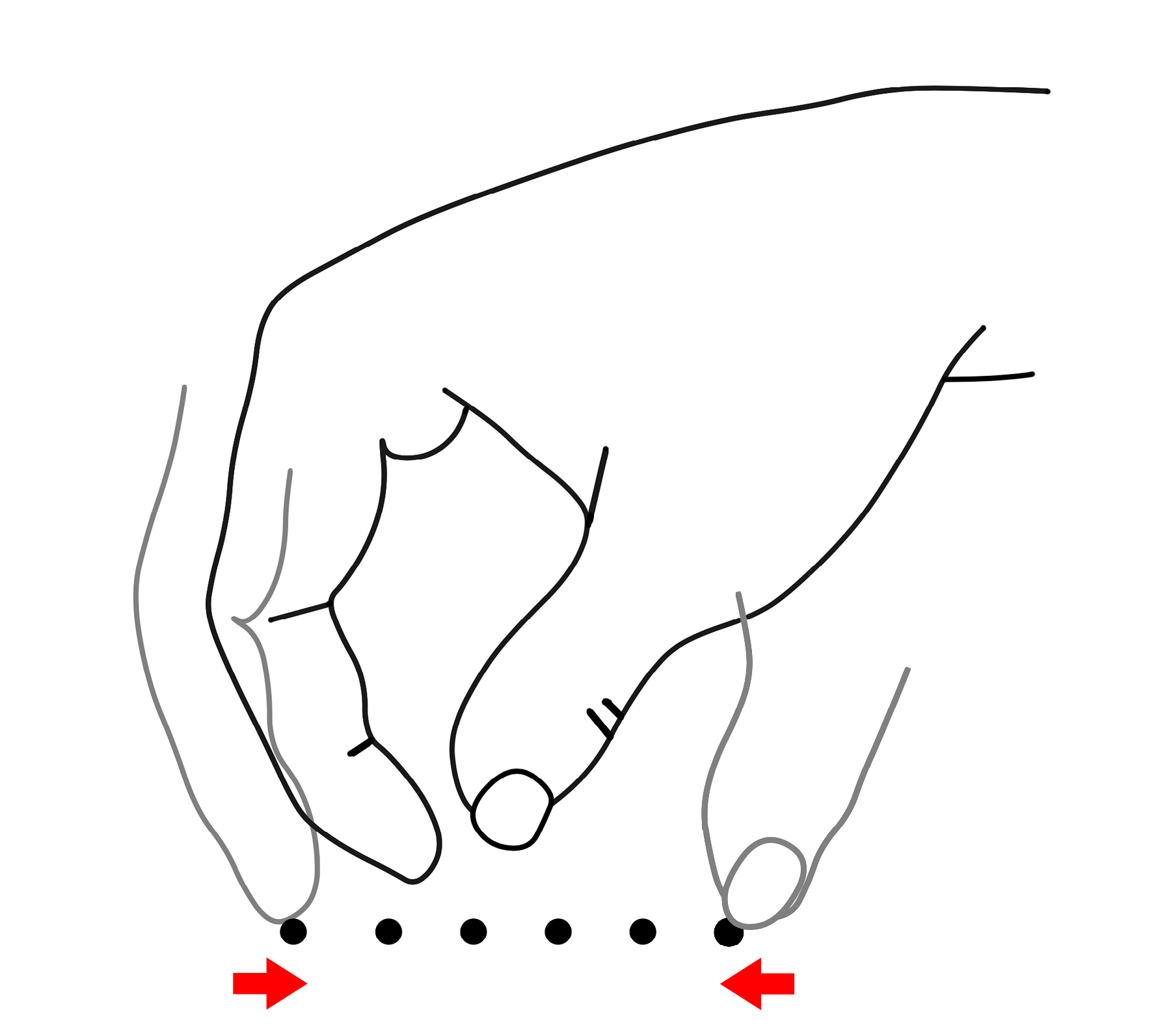
Chords on Adjacent Strings
Two and three-note chords on adjacent strings may be plucked with finger combinations of i-m, m-a and i-m-a. The fingers move together like one big finger. The stroke motion is similar to waving "bye-bye" to the strings.
The second line of Andantino features two-note chords on adjacent strings followed by a thumb stroke:
Two-Note Chords on Adjacent Strings | Carcassi's Andantino (second line)
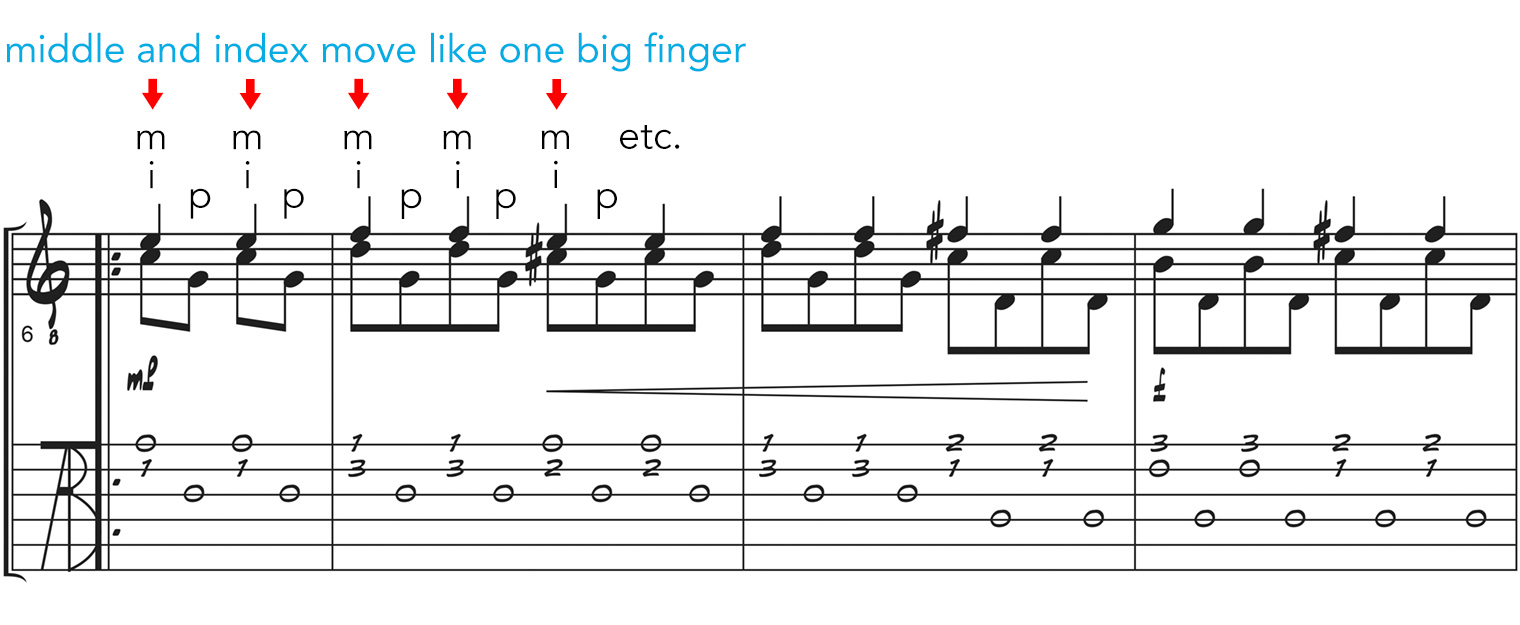
Adjacent String Chords | Hold i-m or i-m-a fingers side by side and move them like one big finger (wave bye-bye)

|
 |
Andantino in C Major "How to" Video
Andantino in C Major | Matteo Carcassi | Peter Kun Frary

Download | Andantino in C Major PDF
 |
 |
 |
©Copyright 2024 by Peter Kun Frary | All Rights Reserved
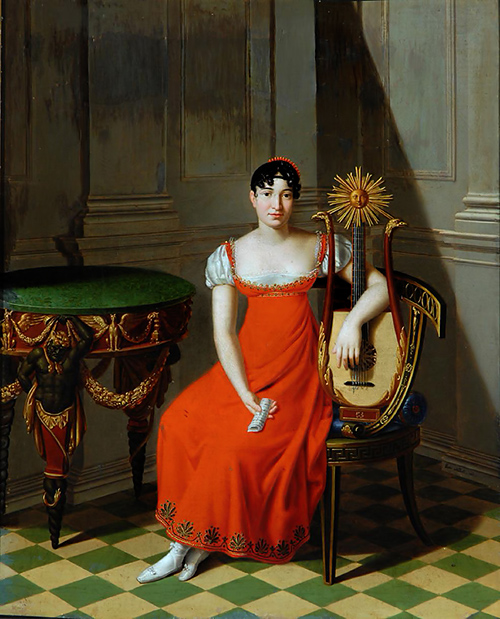


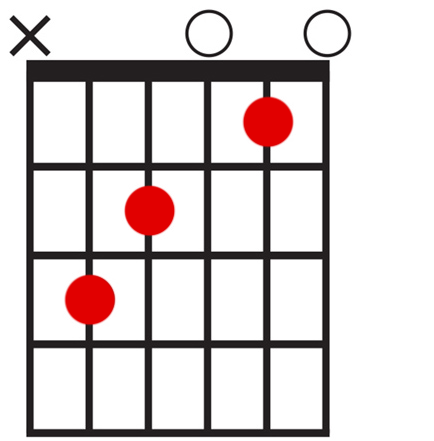 Written Out Chords
Written Out Chords
